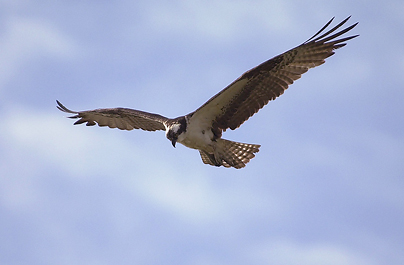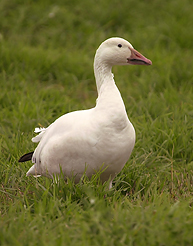 |
DEAD
CREEK WILDLIFE MANAGEMENT AREA
ADDISON, VERMONT
Text and images copyright Heather Forcier
The creek's name is misleading. While no one seems certain exactly
why the ten-mile stretch of shallow waterway is called Dead Creek,
one possibility is that before impoundment began in an effort to manage
the water supply, it would dry up during summers and leave only small,
scattered pools.
The Dead Creek Wildlife Management Area was established in the 1950's, and over approximately the next ten years sixteen separate water control structures were put in place. Managed by Vermont Fish and Wildlife and originally maintained for hunting, the area has now evolved to provide additional recreational uses. The creek no longer dries up during summer months and the entire management area of approximately three thousand acres provides marsh, field, and woodland habitat for a variety of bird and wildlife species. Canoeists, hunters, hikers, and birders are among the many that venture to the wildlife management area each year.
During winter raptors can be easily spotted at the tops of bare trees or circling over nearby fields. The shallow depths of Dead Creek start to freeze. Snow collecting on the icy surface blocks sunlight that underwater plants count on, thereby reducing the oxygen the plants add to the water. Larger fish in the creek, namely the numerous carp, suffer first as their bodies require more oxygen from the water and a “winter kill” event starts to take place.
While the effects may not be apparent until a spring thaw, fish die throughout winter and become exposed as the creek's ice melts away. The dead fish leave a feast for springtime visitors, mostly gulls. Osprey and Bald Eagles may be at Dead Creek around this time, as well as migrating ducks, geese, and wading birds.
 Starting
mid-spring, Vermont Fish and Wildlife begins reducing the water levels
by approximately six inches a month until September. Precipitation
during this time can work to negate this, while dryer summers can
further reduce the levels. The intent is moist soil management: reducing
the water levels stimulates plant growth on newly exposed mud flats
and attracts wildlife. This vegetation provides habitat for some resident
species and a food source for autumn migrants. Fall may see tens of
thousands of Snow Geese in the management area's fields during migration,
with Canada Geese and a variety of ducks. Mid-October is typically
peak for Snow Geese viewing.
Starting
mid-spring, Vermont Fish and Wildlife begins reducing the water levels
by approximately six inches a month until September. Precipitation
during this time can work to negate this, while dryer summers can
further reduce the levels. The intent is moist soil management: reducing
the water levels stimulates plant growth on newly exposed mud flats
and attracts wildlife. This vegetation provides habitat for some resident
species and a food source for autumn migrants. Fall may see tens of
thousands of Snow Geese in the management area's fields during migration,
with Canada Geese and a variety of ducks. Mid-October is typically
peak for Snow Geese viewing.
Years when the water is reduced further than normal due to low precipitation during summer is known locally as an “Addison event”. The lower water level attracts a variety of migratory shorebirds, with birders flocking to the area as well to witness the spectacle.
Offering walking paths, boat access, and nature viewing areas for the diverse wildlife species, Dead Creek Wildlife Management Area is a Vermont “birding hot spot” not to be missed!
For more information on Dead Creek Wildlife Management Area, please see my article that appears on NatureScapes.Net.
| Text and images on this site are copyright Heather Forcier, all rights reserved. No downloading, hotlinking, or other usage allowed without express written permission. Images contain embedded digital watermarks. |